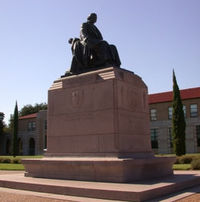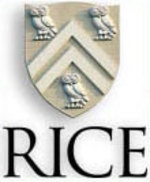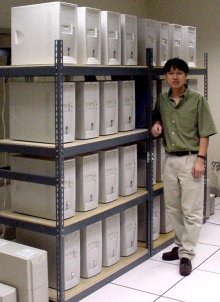If anyone knows of any other deals like this, let me know. Because right now this looks unique.
And if anyone has any opinions, fire away, because this is not your usual blog post. This one asks more questions than it answers.
Rice has signed a deal with Lockheed-Martin in which the latter will have a sort of "mini-lab" inside the Smalley Institute. The company will pick through what everyone is doing, and fund up to six projects each year which could be quickly brought to market.
The new lab-in-a-lab is called the Lockheed Martin Advanced Nanotechnology Center of Excellence at Rice, or LANCER. Cute…cute name.
I haven’t seen the contract, but here’s what I hope is in it:
- A fat up-front fee.
- Annual rent sufficient to fund several graduate fellowships as well as all costs.
- A template agreement on the Intellectual Property, maybe a 50-50 split on whatever goes in.
- A set of termination break-points. Either side can re-evaluate after, say, 3 years, and once every three years thereafter.
There are few guarantees with cutting-edge university research,
especially in materials science. You can’t say Lockheed is "stealing"
the commercial potential, because no one at Rice knows what commercial
potential really means.
They would like to, however. Many scientists would love someone to say "getting warmer" or "getting colder" on the near and long-term potential of some of their projects. And they’d like the freedom to ignore that advice as well.
So there’s a value-add here, Lockheed’s knowledge of what can be
practically transformed from lab to manufacturing in a reasonable
amount of time. I don’t know whether this might poison the rest of the
lab or not — grad students preening for some of that corporate lucre.
It will take a diplomat of high caliber to carry this off.
I would think a three-year term for a Lockheed director might work well
here. Long enough to really come to grips with the environment and the
politics, not long enough to "go native" and start hating on Aggies.
(Uh, Lockheed, don’t make the first director an A&M graduate,
please?)
What this may mean is you have a chance to get, not just some home runs, but some singles, doubles and triples.
Sure, there are concerns. Does this give Lockheed first dibs on
everything coming out of the Smalley lab? To what extent does this make
Rice a dyed-in-the-wool part of the military-industrial complex, which
could really hurt recruiting given that the campus has so many
scientists from places like China, India and Russia.
I guess the bottom line is it’s an experiment.














It could be a great way to get get a jump on the next big thing.
However, I wonder what it would do to the college’s inclination to share it’s work with others in general. Interesting to contrast this to Slashdot’s/Scientific American’s posts this eve about Science 2.0 http://tinyurl.com/3nq92y
It could be a great way to get get a jump on the next big thing.
However, I wonder what it would do to the college’s inclination to share it’s work with others in general. Interesting to contrast this to Slashdot’s/Scientific American’s posts this eve about Science 2.0 http://tinyurl.com/3nq92y